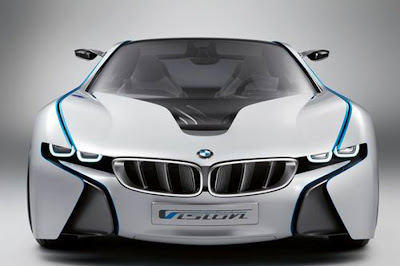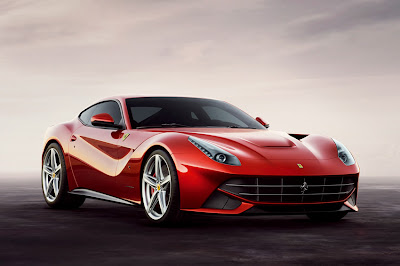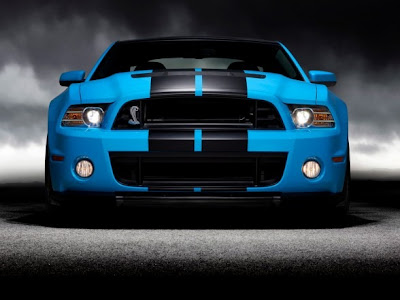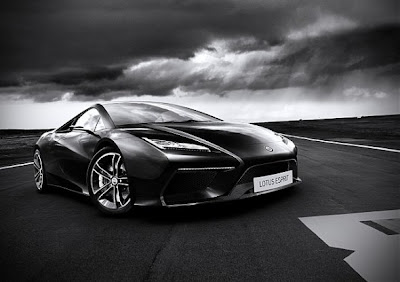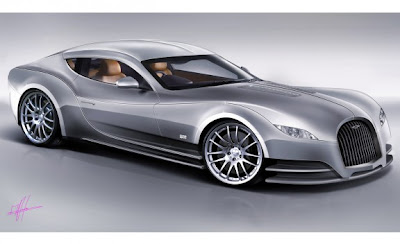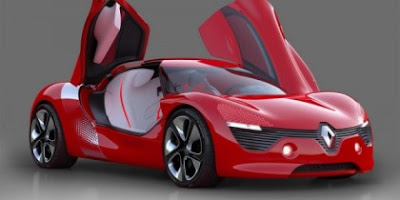New Technologically Advanced Cars 2013
Those of you who think that your car is a means of transport - a picture that takes you from one place to another - think again. Today's cars have become computers in their own right. Electronic sensors are used to measure the performance of a car and microprocessors are present to modify the components to perform well under any condition. New technologies were introduced in the parking lot without any action by the driver and night vision technology that allows drivers to see better at night.
But there is more to come. And the federal government and a major automaker - Ford Motor Company - has taken steps to ensure that these innovations a reality.
Over 10 years of research, Ford creates a task force designers, engineers and scientists around the world that has experience in the development of sophisticated security devices and systems for entertainment and driver convenience to create intelligent vehicles, among other things, to avoid collisions and to allow cars on the road to communicate with each other. The company, along with other automakers and the federal government, aims to create a "common language", which allows cars to communicate on the basis of a common standard of communications. In addition, the partnership should start driving clinics will begin this summer to test the technology. Ford donated two prototype Ford Taurus sedans to the project, which manages the Intelligent Transportation Systems, U.S. Department of Transportation and the prevention of collisions Metrics Partnership, a joint research group led by Ford and General Motors.
The project will help create the standards and will be completed in 2013.
The result of technology that could lead to the easing of traffic delays that will save time and fuel costs. In addition, technology related to infrastructure innovations provide drivers with real-time traffic reports, which will help them to choose less congested routes.
Communication between the cars is based on the Wi-Fi, which allows a 360 degree range of detection. So the car will be able to alert the driver if he or she is on the way to a collision when a vehicle slows or stops suddenly in front down when the traffic changes, if there is a risk of collision when changing lanes when the car approaches the situation or a parked vehicle, or if another driver loses control of his car.
All this is possible because automakers like Ford have developed technologies that can be used. These include Collision Warning and Information System Blind Spot that uses radar to detect vehicles or objects near the vehicle.
In addition, Ford has created so-called "smart intersections" which provides information on vehicles and equipment. For example, this system allows the vehicle to communicate with its speed, direction and drive about 10 times the distance of 300-500 meters per second.
The car's ability to "talk" to allow all kinds of other activities. For example, would allow the car to book, or a first car park in front of the target will
It seems that the federal government understands the importance of developing such technology. Two members of the U.S. House of Representatives, Mike Rogers (R-Michigan) and Russ Carnahan (D-Missouri) introduced legislation to allow the federal government to choose six cities to test a system. In addition, Congress is also considering a bill new surface transportation that will govern how the government spends money in its budget transport. Those in favor of intelligent transport systems will be sure that the agenda is part of long-term government planning.
The technology is also being developed that would allow the car to inform the authorities as an accident occurs. Vehicle speed, steering and braking data and video from inside and outside the car will automatically be sent to the police and insurance companies. In addition, onboard sensors will be able to detect potholes in the road and inform the authorities of road maintenance.
But there is more to come. And the federal government and a major automaker - Ford Motor Company - has taken steps to ensure that these innovations a reality.
Over 10 years of research, Ford creates a task force designers, engineers and scientists around the world that has experience in the development of sophisticated security devices and systems for entertainment and driver convenience to create intelligent vehicles, among other things, to avoid collisions and to allow cars on the road to communicate with each other. The company, along with other automakers and the federal government, aims to create a "common language", which allows cars to communicate on the basis of a common standard of communications. In addition, the partnership should start driving clinics will begin this summer to test the technology. Ford donated two prototype Ford Taurus sedans to the project, which manages the Intelligent Transportation Systems, U.S. Department of Transportation and the prevention of collisions Metrics Partnership, a joint research group led by Ford and General Motors.
The project will help create the standards and will be completed in 2013.
The result of technology that could lead to the easing of traffic delays that will save time and fuel costs. In addition, technology related to infrastructure innovations provide drivers with real-time traffic reports, which will help them to choose less congested routes.
Communication between the cars is based on the Wi-Fi, which allows a 360 degree range of detection. So the car will be able to alert the driver if he or she is on the way to a collision when a vehicle slows or stops suddenly in front down when the traffic changes, if there is a risk of collision when changing lanes when the car approaches the situation or a parked vehicle, or if another driver loses control of his car.
All this is possible because automakers like Ford have developed technologies that can be used. These include Collision Warning and Information System Blind Spot that uses radar to detect vehicles or objects near the vehicle.
In addition, Ford has created so-called "smart intersections" which provides information on vehicles and equipment. For example, this system allows the vehicle to communicate with its speed, direction and drive about 10 times the distance of 300-500 meters per second.
The car's ability to "talk" to allow all kinds of other activities. For example, would allow the car to book, or a first car park in front of the target will
It seems that the federal government understands the importance of developing such technology. Two members of the U.S. House of Representatives, Mike Rogers (R-Michigan) and Russ Carnahan (D-Missouri) introduced legislation to allow the federal government to choose six cities to test a system. In addition, Congress is also considering a bill new surface transportation that will govern how the government spends money in its budget transport. Those in favor of intelligent transport systems will be sure that the agenda is part of long-term government planning.
The technology is also being developed that would allow the car to inform the authorities as an accident occurs. Vehicle speed, steering and braking data and video from inside and outside the car will automatically be sent to the police and insurance companies. In addition, onboard sensors will be able to detect potholes in the road and inform the authorities of road maintenance.
New Car 2013 Pictures
New Car 2013 Pictures
New Car 2013 Pictures
New Car 2013 Pictures
New Car 2013 Pictures
New Car 2013 Pictures
New Car 2013 Pictures
New and Future Car 2013 Nissan Z Exterior
New Future Car 2013 Nissan Z
Nissan has a lot of models that can be developed, but for users of the car want a car that stands out and has a design and good performance, the Nissan Z is an ideal time for most users of the current car . Nissan has long bergagas started to create a sports car to add to their range. It is clear that limited information for the Nissan Z car is the next generation.
The exterior design is the most aerodynamic car with a sporty look of the current model. If this car rndering by BestCar, then there is no indication Nissan Z cars bahaw is really the future that seem aggressive and fast.
One of the most famous and recognized the car Japanese sports cars ever Nissan Z, and we found the next generation Z, Nissan is fully aware that this species evolves, it will remain on top of competition. Part of this development can be understood as the power of hybrid cars has been taken in the green wave of environmental responsibility, which is a priority.
As if anything, it was finally decided in the next Z, Nissan is testing a variety of food choices that you read this. Of course, a focus on the table is a hybrid engine. If Z is coming next, probably in the form of hybrid system currently in the Infiniti M, which is an engine of 3.5 liter gasoline V-6 (known as VQ35DE) with a pair of electric motors. The M Hybrid, setting produces 360 hp and 450 Nm of torque, more than enough for a handful of sports cars average price. In the next generation Z, the fuel consumption of around 30 mpg. There are rumors of a test mule with MZ hybrid propulsion system focuses on the U.S.
Another option is to seriously consider a diesel Nissan engine. Nissan has recently announced an alliance with Daimler, has the ability to distinguish one from Mercedes-Benz BlueTEC under the hood. The most likely candidate would be the 3.0-liter turbo diesel currently in the Mercedes-Benz GL, or something a little "bigger. There is also the possibility that the next generation of Nissan Z, which is expected to reach dealerships in 2013, offers a wide choice of versions hybrid diesel and gasoline only to include. There is no word on what the car would cost, but expect the price of a slight increase especially if the yen remains on levels current, and the car will be manufactured in Japan.

